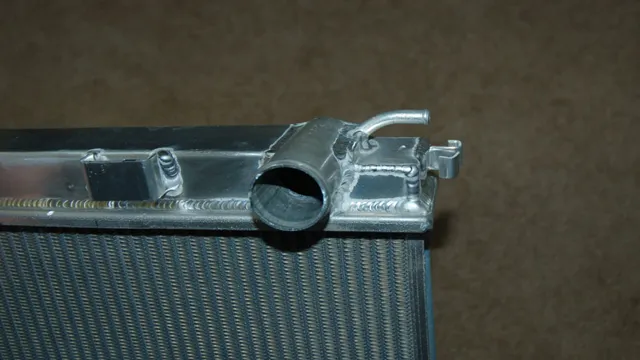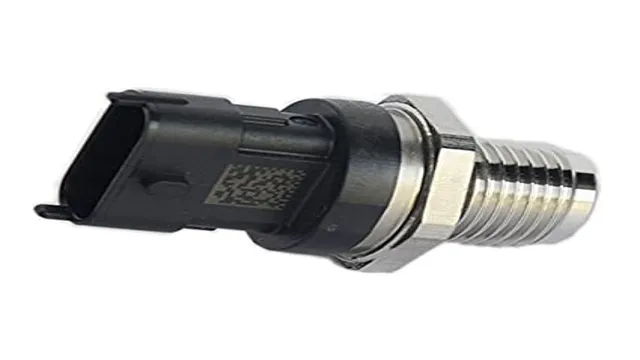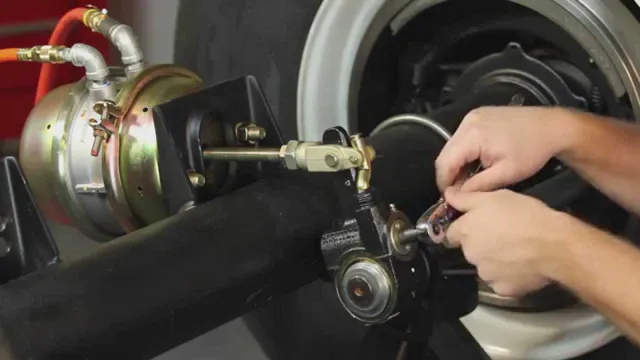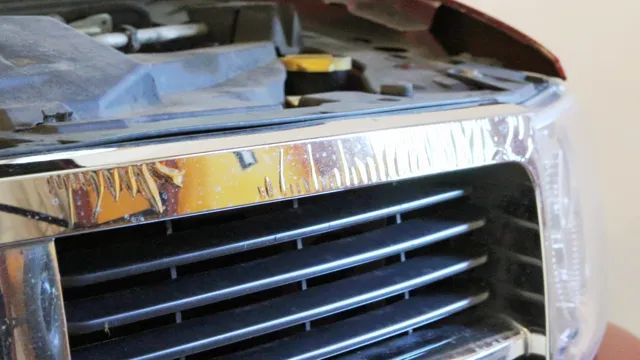Shift into Success: A Step-by-Step Guide on How to Tighten a Loose Gear Shifter in Your Manual Vehicle
Have you ever experienced the frustration of a loose gear shifter? The clunky, imprecise shifting can make even the simplest of drives feel like a feat of strength. The good news is that fixing a loose gear shifter in a manual transmission car is a relatively simple and affordable task that can be done by any DIY enthusiast. By taking the time to properly diagnose the problem and using the right tools and parts, you can have your shifter back to its smooth, precise self in no time.
So, let’s dive into the world of manual transmissions and get that gear shifter fixed!
Diagnosing the Problem
If you’re experiencing a loose gear shifter on your manual transmission car, there are a few possible culprits to diagnose. First, check the shifter linkage. This is the mechanism that connects the shifter to the transmission.
If it’s worn or loose, it can cause the shifter to feel sloppy. Another potential issue is with the shifter itself. Over time, the plastic bushings or pivot ball can wear out, causing the shifter to rattle or flop around.
Finally, if the shifter is tight but the transmission is still slipping out of gear, it could be low transmission fluid or a faulty synchro ring. By taking the time to diagnose the problem, you can determine the best course of action to fix your loose gear shifter and get back to smooth shifting.
Check gear shifter linkage
When faced with issues related to your gear shifter linkage, it’s important to properly diagnose the problem. If you’re experiencing difficulty shifting gears or if your transmission slips while driving, it’s likely that your gear shifter linkage is the culprit. This is the system that connects your gear shifter to the transmission and allows you to easily select the appropriate gear while driving.
A damaged or worn out linkage can cause a variety of issues, so it’s important to check it out immediately to prevent any further damage. To diagnose the problem with your gear shifter linkage, you can start by identifying any visual damage. Look for any signs of wear and tear and check for any loose or missing screws or bolts.
You can also perform a manual inspection by removing the gear shifter and inspecting the linkage mechanism. This will give you a better idea of any damage or wear that may be present. If you’re not comfortable inspecting the linkage system yourself, you can take your car to a mechanic who will be able to diagnose the problem and provide a solution.
They may also recommend a replacement part for your gear shifter linkage if the damage is beyond repair. Keep in mind that it’s important to address any issues with your gear shifter linkage as soon as possible to avoid further damage to your transmission. In conclusion, diagnosing problems with your gear shifter linkage can be a simple process if you know what to look for.
Keep an eye out for any visual damage or perform a manual inspection to identify any worn-out components. If you’re unsure or uncomfortable with this process, it’s best to take your vehicle to a mechanic to ensure that your car is running smoothly and that any issues are addressed immediately. By taking care of your gear shifter linkage, you can ensure that your car is operating at peak performance and that you’re not facing any unexpected repair costs down the line.
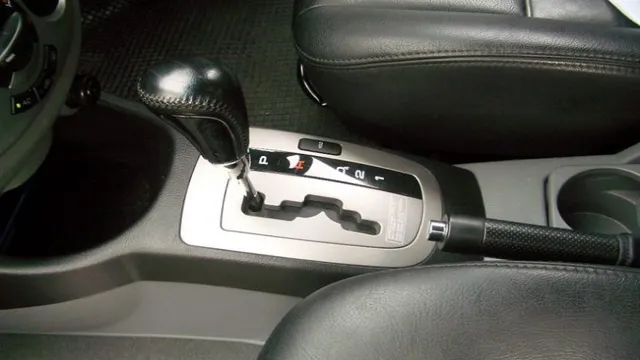
Look for wear and tear
When it comes to diagnosing problems with your car, one important thing to look out for is wear and tear. Over time, parts of your car can become worn down and may even break altogether, leading to potentially costly repairs. By inspecting your car regularly, you can catch signs of wear and tear early on and prevent larger problems from developing down the line.
Pay special attention to things like your tires, brakes, and engine components, as these are all areas that are prone to wear and tear. If you notice any signs of damage or excessive wear, it’s important to address the issue promptly in order to prevent any further damage. So the next time you’re taking a look under the hood or checking the state of your tires, keep an eye out for any signs of wear and tear and take action as needed to keep your car running smoothly.
Check bushings or bearings
If your vehicle is making strange noises or vibrations, it could be due to worn-out bushings or bearings. These small components play a crucial role in ensuring smooth and stable movement of various parts in your car. Bushings are usually made of rubber and act as a cushioning barrier between two metal parts, such as the suspension and chassis.
On the other hand, bearings are small metal balls or rollers that reduce friction between moving parts, such as in the wheels or engine. If you notice any unusual sounds or movements when driving, it’s important to get your vehicle inspected by a mechanic. They can check the bushings and bearings for signs of wear and tear or damage and replace them if necessary.
Neglecting this issue can lead to more significant and costly damage in the long run. So, always prioritize regular maintenance of your vehicle to avoid any potential issues and ensure optimal performance on the road.
Tightening Loose Parts
If you’re experiencing a loose gear shifter in your manual car, don’t panic! It’s a common issue that can usually be fixed with a few simple steps. The first thing to check is the shifter cables or linkage. Over time, these can become loose and cause the shifter to feel like it’s slipping.
If this is the case, simply tighten the nuts or bolts that hold the linkage in place, making sure not to overtighten and risk damaging anything. Another possible culprit for a loose shifter is worn bushings. If you hear clunking or rattling sounds when shifting, this may be the issue.
In this case, replacing the bushings can often fix the problem. Finally, if all else fails, it may be time to replace the shifter assembly itself. Don’t hesitate to seek out professional help if you’re unsure of how to proceed.
With a little bit of effort, you’ll have that shifter feeling tight and responsive once again.
Use pliers or wrench to tighten linkage
If you notice that your faucet or other plumbing fixtures have become loose, don’t panic! It’s a common problem that can be easily fixed with a few simple tools. One of the most common causes of loose fixtures is a loose linkage, which is the part that connects the handle to the valve. To tighten the linkage, you’ll need a pair of pliers or a wrench.
First, remove the handle by loosening the set screw (usually located on the underside of the handle). Then, use the pliers or wrench to tighten the linkage from the inside. Once it’s tight, replace the handle and test the fixture to make sure it’s no longer loose.
With just a few minutes of work, you can easily fix a loose linkage and prevent further damage to your plumbing fixtures.
Replace worn or broken parts
If you’ve noticed that your furniture is feeling a bit wobbly and unstable, it may be time to tighten the loose parts. Loose parts can be an annoying issue that can lead to further damage to your furniture if left unchecked. One way to address this problem is to use a screwdriver to tighten any loose screws or bolts.
Simply locate the loose part and tighten it until it is snug. If you notice that the parts are still loose after tightening, you may need to replace the screws or bolts entirely. Remember, neglecting to address loose parts can worsen the issue and result in costly repairs down the line.
So take action and fix those loose parts as soon as possible to ensure the longevity of your furniture.
Lubricate parts regularly
As part of your regular maintenance routine, it’s important to ensure that all moving parts stay lubricated. Not only does this help prolong the lifespan of your equipment, but it can also prevent wear and tear, reduce friction, and minimize the risk of accidents. One of the most critical aspects of this is checking for loose parts and making sure they are tightened.
Loose bolts, screws, and other fasteners can cause serious damage or even injury if they come undone while the machine is in use. Make a habit of periodically inspecting all equipment for signs of wear or looseness, and tighten any components that need it. By doing so, you’ll not only ensure the safety and longevity of your equipment but also avoid potential costly repairs.
So, the next time you’re performing regular maintenance on your equipment, don’t forget to check for any loose parts that need a little tightening up!
Professional Help
If you’re experiencing a loose gear shifter in your manual transmission vehicle, it’s important to know that help is available. While some people may attempt to fix the issue themselves, it can be a tricky process and may require specialized tools and knowledge. Seeking professional help from a mechanic or auto repair shop can save you time and prevent further damage to your vehicle.
A professional can diagnose the root cause of the loose gear shifter and provide an appropriate solution, whether that’s tightening loose bolts or replacing worn-out parts. Remember, it’s important to address this issue promptly, as a loose gear shifter can compromise your ability to drive safely and effectively. Don’t hesitate to reach out for professional assistance if you’re experiencing this problem with your manual transmission vehicle.
When to consult a mechanic
Knowing when to consult a mechanic is crucial in maintaining the health of your vehicle. While doing some repairs or maintenance tasks yourself can be cost-effective, it’s important to understand that not all repairs can be tackled with a DIY approach. Professional help is necessary for complex issues that require specialized knowledge, skills, and equipment.
If you hear strange noises while driving, experience poor performance, or notice any other unusual changes in the behavior of your car, it’s wise to get it checked by a professional mechanic. Ignoring these issues can lead to more serious problems down the line and compromise your safety on the road. A reliable mechanic can diagnose and repair the issues efficiently, ensuring your car is running smoothly and safely on the road.
So, don’t hesitate to seek professional help when you suspect any problems with your vehicle.
Choosing the right mechanic
When it comes to choosing the right mechanic for your vehicle, it can be difficult to know who to trust. Professional help can make all the difference in ensuring that your car is running smoothly and safely. It’s important to do your research and read reviews before making a decision.
Look for a mechanic with experience in your specific make and model, as well as certifications and training. Don’t be afraid to ask questions and clarify any concerns you may have. A good mechanic should be transparent and upfront about pricing and any necessary repairs.
Think of it like finding a doctor for your car – you want someone who is knowledgeable, trustworthy, and will prioritize your vehicle’s health. Trusting your instincts and finding the right mechanic can give you peace of mind on the road.
Conclusion
In conclusion, fixing a loose gear shifter on a manual transmission requires a little bit of detective work and a lot of elbow grease. It’s important to identify the specific problem first, whether it be a loose linkage, worn bushings, or a misaligned shifter fork. Once you have pinpointed the issue, it’s time to roll up your sleeves and get to work.
Don’t be afraid to dive in and tinker with your gear shifter until you get it just right. And remember, when all else fails, a little bit of duct tape and WD-40 can go a long way. Stay tuned for more witty and clever car repair tips from your friendly neighborhood AI assistant.
“
FAQs
How do I know if my gear shifter is loose?
A loose gear shifter will feel wobbly and may not engage gears properly. You may also hear a rattling or clunking noise when shifting.
Can a loose gear shifter be fixed at home?
Yes, a loose gear shifter can often be fixed at home. It may require tightening or adjusting the shifter mechanism, or replacing a worn-out bushing.
What tools do I need to fix a loose gear shifter on a manual transmission?
You may need a set of wrenches, pliers, and a socket set to access and adjust the shifter mechanism. You should also consult your vehicle’s manual for specific instructions.
Should I take my car to a mechanic to fix a loose gear shifter?
If you are unsure about how to fix a loose gear shifter or if the problem persists after attempting to fix it at home, you may want to consult a mechanic. They can diagnose any underlying issues and make any needed repairs.



